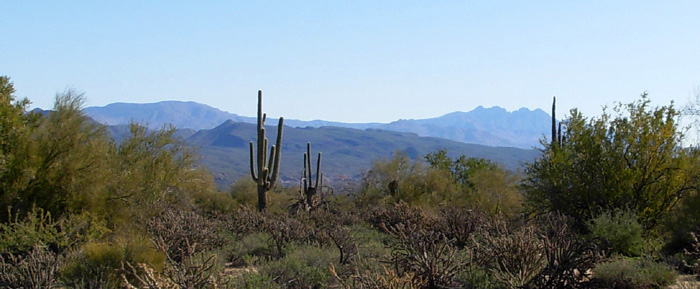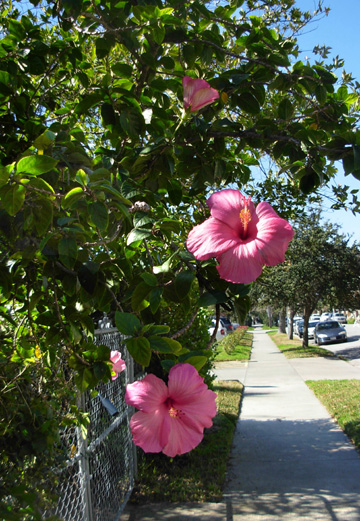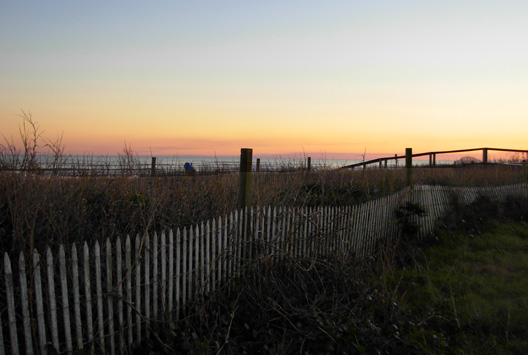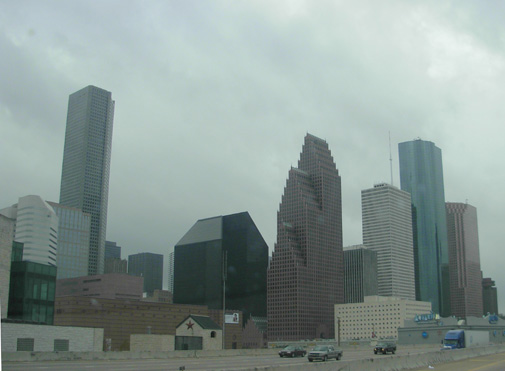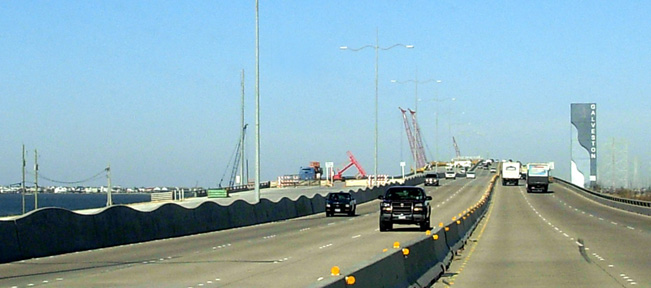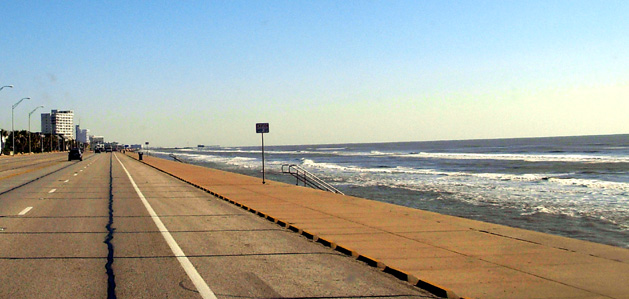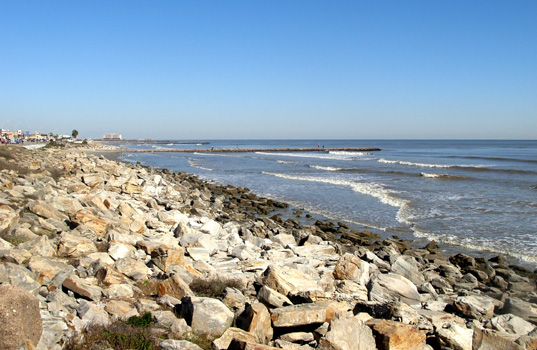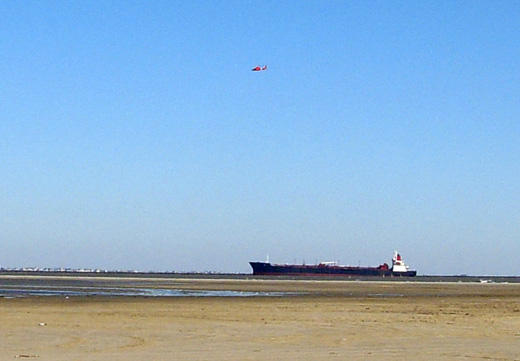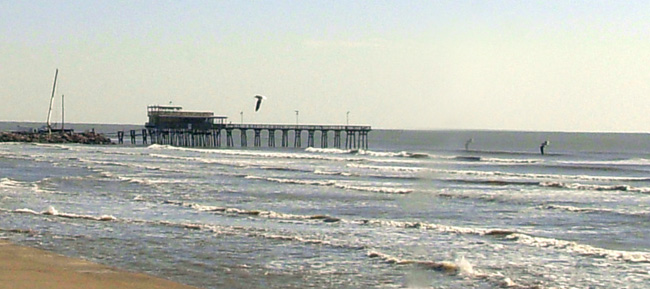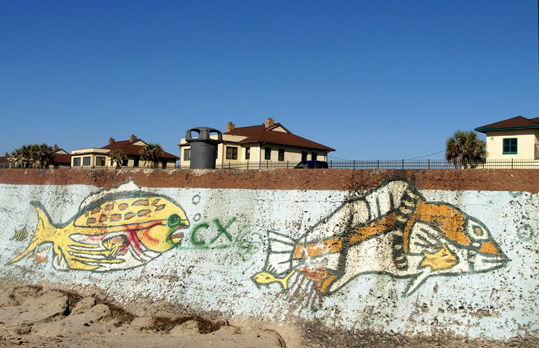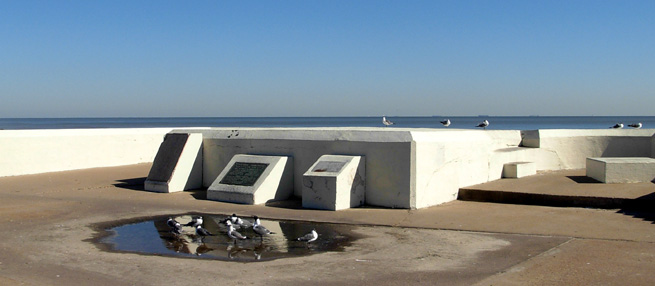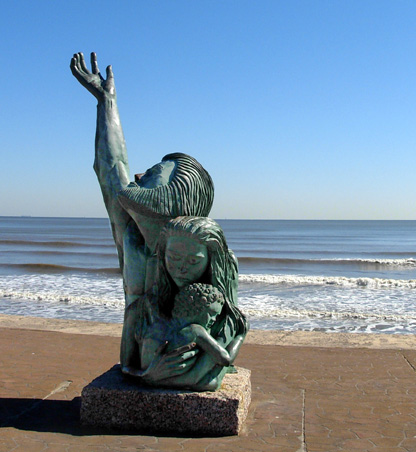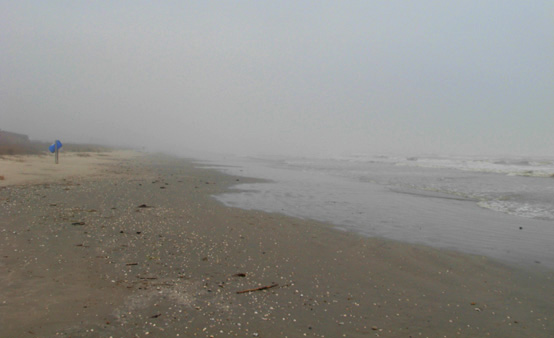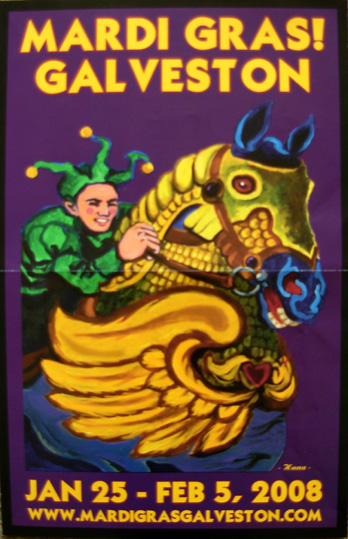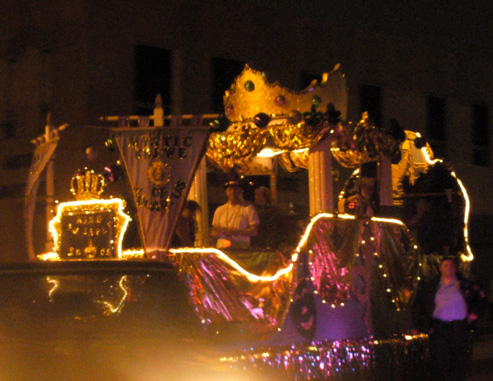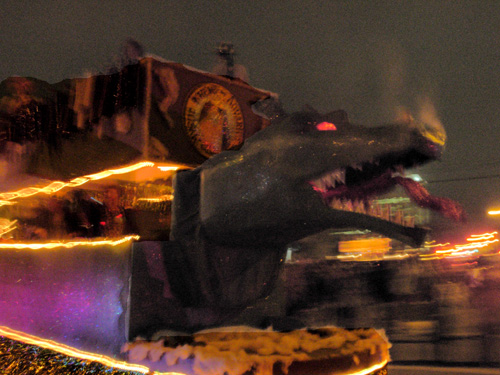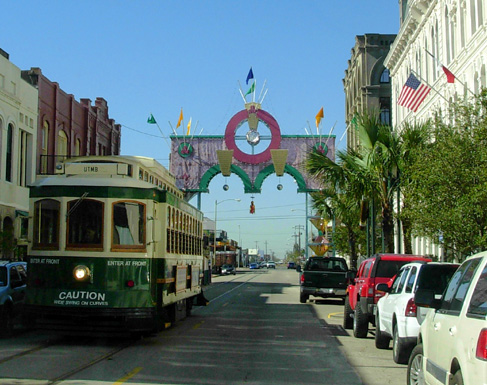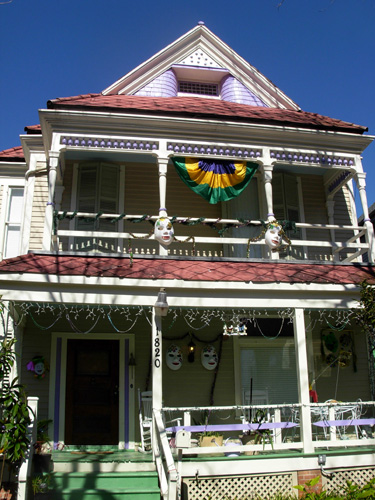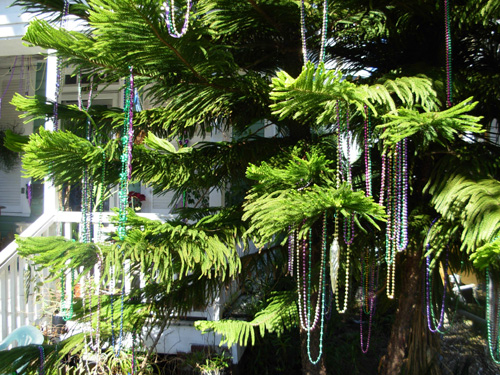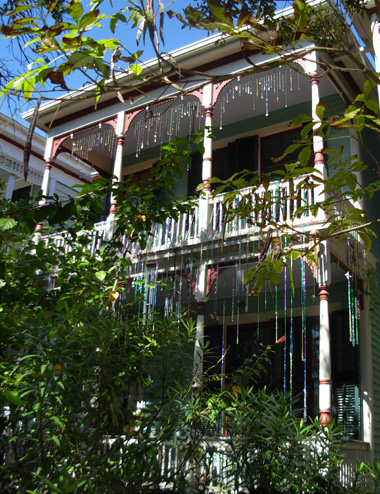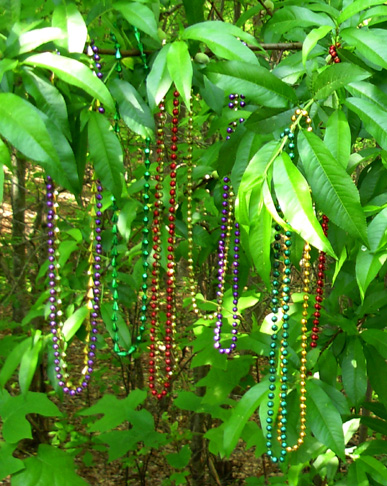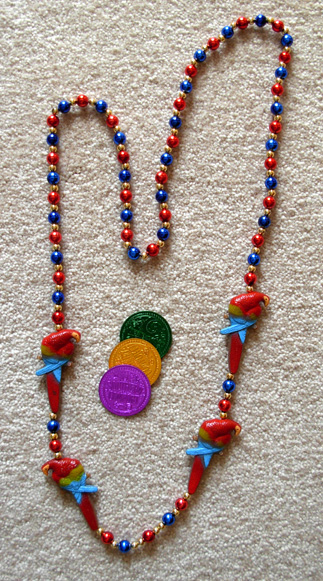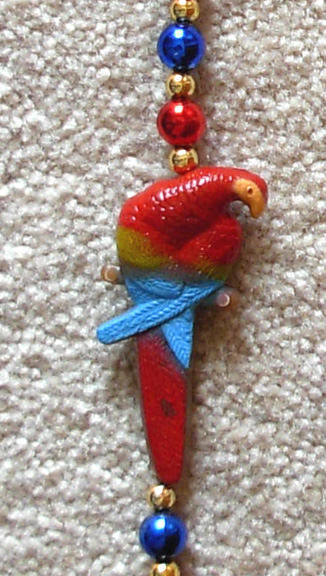|
2008 ULTRA RUNNING ADVENTURES
| ||
|
Runtrails' Web Journal
TUESDAY, FEBRUARY 5
I was humming this song as we drove pretty much due south to
Galveston,
Texas today from Huntsville. Although the song
expresses the yearning of a soldier for the girl he left behind
while he was fighting in a war, there is a lovely reference to
"the beach where we used to run."
And that's how I'm tying this song to our little trip to
Galveston! Simplistic, yes, but this web site is geared more
toward running and traveling than a discussion about whether
this was an anti-war song or a pro-soldier song. Besides, it's
the song that comes to everyone's mind first when you mention
Galveston.
WHY GALVESTON ISLAND?
Jim and I usually prefer to spend time in the mountains
rather than on beaches, but you can't beat the Texas Gulf Coast in
February. I guarantee you it's not 65 degrees at 10,000 feet
anywhere in the Colorado Rockies right now!
Much of this trip has been "planned" on the fly. We've pretty
much been making it up as we go. About all we knew before we
drove to Phoenix in late December was that we had a race to run
on New Year's weekend. After that, we weren't sure where we'd
hang out in the sun -- probably Arizona most of the time, we figured.
We wanted to stay somewhere (relatively) warm for a month or two where
there were trails to run and interesting things to
see and do. And camping accommodations had to be affordable
-- like parks, military bases, national forest land, etc., not
expensive private campgrounds.
Jim was planning to run the Pemberton Trail 50K at
McDowell
Mountain Park so it made sense to camp there until the race, if
possible.
We loved it there and stayed almost three weeks. Then he decided to run
Rocky Raccoon, which was scheduled for a
week before the Pemberton race. That meant withdrawing
from
Pemberton and heading to Texas earlier
than originally planned. Although we considered going back
home from there, after the race we simply weren't ready to go
home yet.
So where could we kill some more
time? The Gulf Coast somewhere? Maybe we could follow the
coastline along Louisiana, Mississippi, and Alabama, stopping
anywhere that looked interesting, then head
north through Atlanta. We even contacted a running buddy in
Atlanta to
see if he wanted to go to the Georgia Aquarium with us.
Then one evening I was reading an RV
travel newsletter on the internet. On a discussion board someone
raved about the great camping right next to the dunes on the
Gulf of Mexico at
Galveston Island State Park, and I began formulating a plan:
Hmmm. That sounds like a warm place. We've never been to Galveston,
and a beach setting sounds so exotic right now . . .
Jim was game. After looking at our maps and doing some research on the internet,
we determined that the island wasn't much out of our way after
Rocky, it had interesting things to see and do, it was WARM in
February, the state park campground looked and sounded very
nice, and we'd be close enough to Houston that we could drive up
there once or twice. Let's make reservations!
And we did. Although we couldn't reserve a specific site ahead
of time, by arriving early in the week we were able to
score a terrific spot by the dunes. Dune sites are $5 more per
day than sites farther from the beach, but the cost is still
reasonable with our Texas State Parks Pass (i.e., no additional daily entry
fee to the park).
And we love it here so much, I doubt we'll go up to Houston more
than once while we're here! More about the park in
the next entry.
ONE LONG CITY COMMUTE
We waited for morning rush hour to end before leaving
Huntsville
State Park for the 125-mile drive south through Houston to
Galveston Island. Or rather, we thought rush hour(s) would be
over. Not. Apparently it is never over. There was heavy (but
fast-moving)
traffic on the 1-45 corridor this morning and it was like one long city most
of the
way to Galveston. There was very little rural scenery, just
traffic and buildings and one suburb or town after another --
your typical huge metro sprawl.
We were happy to get south of the Space Center and into more
exotic terrain with tall palm trees and bayous full of water and
birds the closer we got to the island. I was surprised to see
some deciduous trees without leaves; I thought all the
trees would be "ever green" in this very mild climate.
It was cloudy and very warm (in the 70s) on the drive south. Possible
severe thunderstorms were headed toward Houston and parts north
and east
by afternoon, but they weren't supposed to strike Galveston
Island. However, it was very foggy as we crossed the bridge
spanning Galveston Bay and we were deprived of a great view of
the little city from the high span. This is a photo I took of the bridge on
a sunny day later in the week:
Galveston, like other barrier islands and cities along the entire Gulf Coast, is
vulnerable to storms. You wouldn't want to be caught here in a
hurricane, especially one as strong as the one that struck in
1900. It wiped out many homes and other buildings and killed
about 6,000 people. After that debacle, a 17-foot high, ten-mile long
seawall was constructed between 39th and 53rd Streets to help protect the city. Today the
drive along Seawall Boulevard is one of Galveston's major attractions
for visitors to the island.
During our stay on the island we saw lots of people walking,
running, and cycling on the pedestrian walkway along the sea
wall. I was hoping to run down on the sand, but there wasn't
much sand on which to run here -- mostly rip rap to prevent
erosion from the relentless waves:
Stewart, East, and Apffel Parks along the eastern end of Seawall
Boulevard provide access to beaches for swimming but they weren't open yet. I was happy just
running on the hard-packed sand on the wide beach at our
campground in the state park and it was much quieter and more
scenic there than along the seawall.
One day we drove to the eastern end of the 32-mile long island
to Apffel Park to watch some large ships enter the Galveston
Channel. The entire Galveston Bay area is a major seaport.
Notice the helicopter flying above this ship:
We could also see some oil rigs 'way out in the Gulf of Mexico on clear
days and nights.
There are over a dozen piers along the seawall for people to
fish or just walk out. At least one hotel and several
restaurants are built on piers over the water. Some are quite
sturdy, while others look a little rickety.
In one area about half a mile long, artists have been allowed to
paint the wall in bright sea motifs. You have to go down one of
the stairways to the sand to see them. They aren't visible from
the street:
TRIBUTE TO TENACITY
Galveston has a serene commemorative plaza and sculpture along
the seawall to honor the victims of the devastating hurricane of
1900:
One of the plaques reads, in part, that the sculpture
(shown below)
"represents the suffering of those who perished and the tenacity
of those who survived the nation's deadliest natural disaster."
The plaque describes the severe destruction of lives and
property in 1900, the efforts over the next decade to build the
seawall and elevate the city 17 feet, and the success of that
huge project. A similar hurricane in 1915 resulted in fewer
than a dozen deaths of people living behind the seawall, and
apparently no one has died in Galveston during a bad storm since then.
After spending five days on the island Jim and I decided this is
a great place to visit in the winter when it's cool and the
likelihood of a hurricane is low, but we wouldn't want to
live anywhere this vulnerable. Beautiful coastlines all over
the world draw residents like moths to light and they pay a
fortune to live close to the water. They may pay an even higher
price by losing their property and/or lives to hurricanes and
cyclones. Many people are
willing to take that risk. I'll take other risks (like living
somewhere tornadoes sometimes strike!), but not that one.
I understand the draw. The sea is mesmerizing. I have a visceral
reaction to it when I'm walking or running along a beach. The
tide literally pulls at my gut and my soul. That doesn't mean it
makes any sense to build on such risky real estate, though.
Consider New Orleans, which is even more vulnerable because it
is below sea level. As much as I enjoyed a visit there in the
1980s for Mardi Gras, I'm not so sure it should be rebuilt after
the devastation Katrina wrought. Galveston's been luckier -- so
far.
And some people think running ultras is risky!
MARDI GRAS IN GALVESTON
Sometimes the serendipitous events
you aren't expecting are the most fun.
We had no idea that Galveston
celebrates Mardi Gras until our arrival at the campground this
afternoon. The office at the state park had lots of brochures
with things to do and see on the island. We looked through those
as we waited our turn to check in, then the personable ranger
commented that we were lucky to be here on the last night of
Mardi Gras for the Fat Tuesday parade.
Really? That sounded pretty cool.
Tell us more!
It's been about twenty years since
I attended the real thing for a week in
New Orleans and about as
long for Jim, too He wasn't
initially so thrilled, thinking of the debauchery that often
accompanies the original celebration. My memory bank, however,
holds more fun recollections like catching colorful beads and
coins during the daily parades and touring the fascinating
Blaine Kern float museum. What magic! The ranger
assured us that Galveston's celebration is definitely more
family-oriented, suitable for kids and older folks like us who
don't appreciate drunken revelry.
Jim consented somewhat reluctantly
to go to the parade but ended up having a decent time. We were able to park within a
couple blocks of a corner that proved to be a good place to
watch the parade, which began near us after it got dark. Quite a
crowd assembled along the parade route on the last night of the
celebration. It was definitely a much smaller version of the
original Mardi Gras in New Orleans, and the krewe floats weren't
as impressive, but we enjoyed doing
something unexpected and fun.
And yeah, we got into the whole
bead-catching thing with all the other kids (from two to
eight-two) around us! Jim also caught some beads to hand
to kids iin front of us who were too short to snag them first. Each
time I've watched a Mardi Gras parade I've told myself it's
silly to catch beads, coins, and candy the krewes throw to
spectators -- but it's one of those contagious crowd things
where I quickly get into the spirit of the celebration. It's kinda like being a 10-year-old
again when I'm running through puddles on a trail run
Laissez les bon temps rouler!
The whole city of Galveston gets decked out
for
Mardi Gras. This is the
97th year for the event in Galveston, compared to almost 300
years in New Orleans. When we toured the historic districts we found
considerable evidence of Mardi Gras season, including this large street
banner displaying the trademark purple,
green, and yellow colors:
We also saw homes with Mardi Gras masks
and cloth banners:
. . . Mardi Gras beads hung on tree
branches like the large Norfolk Island Pine below:
. . . and beads hung on
porches and in windows:
These folks go all out for Mardi
Gras!
After we got home I tried to
emulate the beads-in-a-tree thing, hanging several on one of our
peach trees:
They look better on a large Norfolk Island Pine!
My favorite necklace from our take has four parrots. Shades of Jimmy Buffet?
Now all I need is a tropical shirt, board shorts, flip flops,
and a margarita . . .
I'll have more about the beauty and charm of the city of
Galveston soon. But next, let's tour Galveston Island State Park
where we are camped . . . risky, yes, but we can see how
it's hard to leave a place like this!
Cheers,
Sue
© 2008 Sue Norwood and Jim O'Neil |
|||
